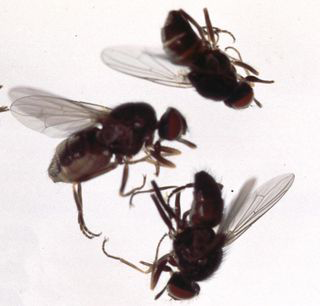
by blogediter | Jan 31, 2018 | Chimney Problems
Flies in fireplace
Flies in Fireplace
Q: Jason, I have an awful fly problem, and I think they are coming down the chimney looking to get away from the outside heat. Will the Chimney Balloon stop flies for sure? – MH
A: Hi MH, From our conversation on the phone, I was glad to hear you had your fireplace cleaned recently. Sometime fireplace flies have to do with a dead animal in the flue, or pigeons using your chimney top as an outhouse. But since you have a screened chimney top and a clean flue we can rule that out.
Flies and wasps coming down through the fireplace is a very common issue, and the Chimney Balloon does stop them. Especially in spring and fall insects follow food and other smells down into the fireplace chimney and end up inside. We get this questions so frequently there is a section of our website dedicated to it: http://www.chimneyballoon.us/bat_wasps_in_fireplace.html and some other blog articles regarding wasps as well: http://www.chimneyballoonusa.com/blog/2009/11/help-wasps-are-coming-in-through-my-fireplace-damper.html
The key to stopping flies in particular is to get an accurate measurement. Here is a section of the website that outlines how to do that measurement: http://www.chimneyballoon.us/Chimneyballoonsizing.html also you can give me a call or email pictures if you want advice on the measuring.
Once you have the measurements we need to get a Chimney Balloon for you that is as close to your measurements as possible (even if we have to go with a custom size), so you get a perfectly tight seal. Flies and maggots can be persistent in their entry techniques so you don’t want wrinkles in the Chimney Balloon from the too much extra material. – Jason
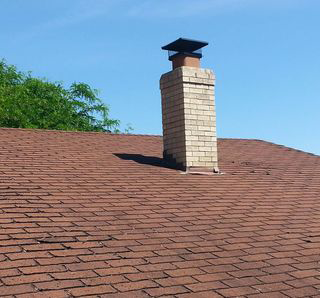
by blogediter | Jan 22, 2018 | Chimney Problems
Q: Hi Jason,
I am a South Florida resident with a Chimney in my home. Does a Chimney Balloon or Flueblocker help at all in reducing warm & humid air from entering the home? And for that matter, do they limit escape of cold air from the home? Thanks in advance for your assistance – MB
A: Hi MB,
Yes, the Chimney Balloon and the Flueblocker both help quite a bit from stopping hot and humid air infiltration. In the summer your AC, clothes dryer, bathroom vent fan, etc…can cause a reverse draft through the Chimney. This causes the fireplace to siphon super-hot air from your roof area down the Chimney into the house. If you have a wood burning fireplace this reverse draft will often manifest itself by a slightly smoky smell near the fireplace when you start to use your AC, clothes dryer, etc… Installing a Chimney Balloon or Flueblocker seals off the flue, so the Chimney cannot snorkel the hot air down into your home.
Cold A/C air, on the other hand, tends to stay low and doesn’t fly up the Chimney. So you will find your energy savings comes from keeping the hot air out. – Jason

by blogediter | Jan 12, 2018 | Chimney Problems
Q: Jason, Are there any restrictions in using the Chimney Balloon in areas of the country where temps in the summer exceed 120 degrees? We live in Arizona and the outside temperature gets very high. I imagine it is even hotter by the Chimney-top on the roof. I don’t want my Chimney Balloon to burst from the heat. – KL
A: Hi KL, As long as the thermometer outside doesn’t go past 180 degrees F your Chimney Balloon will be fine, but if that happens we will have other things to worry about.
All kidding aside… The Chimney Balloon is heat reactive. If someone accidentally lights a fire under it. At about 180 degrees F, the balloon material is designed to burst and shrivels like a shrinky-dink, so it can get out of the way fast.
But keep in mind your balloon is installed low in the Chimney Balloon on by the firebox. The Chimney balloon will be nice and shaded in there, so even if you roof temps get close to 180, that won’t bother the Chimney Balloon. – Jason
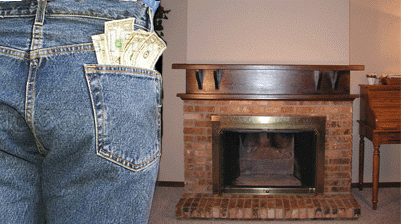
by Jason Raddenbach | Aug 29, 2017 | Chimney Problems
Fireplaces take more than they give. On a cold winter eve who of us is not tempted to go to the living room and stoke up a fire in the fireplace and read a book in front of the fire? You may be thinking “I am doing myself a favor by supplementing the furnace with additional heat”, but in fact you are making your house colder and could be contributing significantly to pollution depending upon how you burn.
The wood burning fireplace is a loosing proposition
The air action that a wood burning fireplace initiates in our home is wasteful. The moment the damper is opened heated air begins pouring out of the top of the chimney. As the fire in the hearth accelerates, the combustion process grabs already heated air from your home and burns the oxygen and combustible gasses in it. The heat that is created in this combustion quickly rises and grabs more heated inside air and tosses it up the chimney. You can restrict the amount of inside air that the fireplace has access to by installing glass doors, but this will also severely limit the amount of radiant heat that fireplace can cast forward into your living space. This radiant heat is the heat you feel on your skin in front of the fireplace, and is the only usable heat that the fireplace will produce since the combustion heat is pouring out the top of the chimney. In the meantime the home is drawing in cold outside air from other places (i.e. windows, light sockets, doors, etc) to replace the air that is escaping the home through the chimney. This is referred to as the “stack effect”.
Loosing heat even while dormant
Even while the wood fireplace is not being used, the traditional metal dampers tend to leak air since they warp and degrade rapidly in the extreme heat and corrosive soot environment. The removable and reusable Chimney Balloon fireplace chimney damper available in assorted sizes inflates into place in the flue and seals it off efficiently to stop heat loss and the cold draft.
The good, the bad, and the pollution
If you burn a fast hot fire this creates very little smoke and pollution, and it can give you a noticeable amount of radiant heat gain in the room the fireplace it is in. However it is using volume amounts of your already heated inside air for it combustion which exceeds your heat gain ratio. A slower fire is even worse since you are still loosing heated air out the chimney and getting very little radiant heat in return. This black type of fireplace smoke is a terrible pollutant and contributes to respiratory irritant for people with asthma and allergies.
Wood burning fireplaces are wonderful nostalgic centerpieces for many American homes. But a homeowner should be aware of the issues associated with fireplace use.
Sources:
US Department of Energy
WoodHeat.org
GreenBuildingElements.com
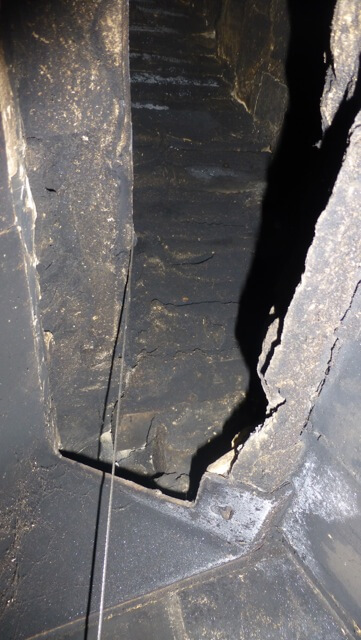
by Jason Raddenbach | Aug 28, 2017 | Chimney Problems
Some fireplaces have sharp edges
Q: Jason, Your customer service has been top notch, but I’m still not having good luck with the Chimney Balloon. I purchased one a year or two ago. Over time I noticed it had become deflated. I’ve not blown it back up a number of times in the past week. It must have a leak somewhere as it will not stay inflated. Do the valves develop leaks?
Anyway, I’m just a bit frustrated and wishing this worked better than it does. I’m not sure there’s anything to be done about it, but I needed to vent (no pun intended). – SR
A: Dear SR,
There are some applications that are just not hospitable to the Chimney Balloon. I’m afraid this may be one of those applications.
However, we have two products that are quite a bit more durable than the Chimney Balloon:
The Flueblocker is a dense wool pad with a rigid air barrier sewn inside it. Judging by your photos and the Chimney Balloon size you purchased before, my bet would be on the 13×35 Flueblocker. The length will be perfect, but you might have to trim a bit off the depth. I would try fitting it full sized first to see if it is a pressure fit, and then trim down from there if needed. Just like a haircut, you can always take more off, but you can’t glue it back on.
Another option is a Chimella. That would deploy up into your smoke chamber or flue tile. The Large Chimney Umbrella would cover either.
If you are having a hard time deciding on what one to go with, use our product selector tool to go step by step through your application. Or just give us a call.
– Jason
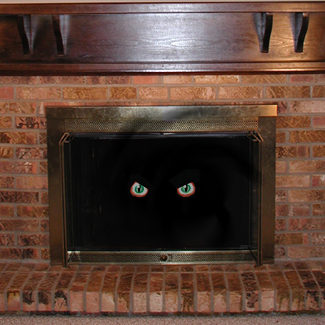
by blogediter | Aug 21, 2017 | Chimney Problems, Gas Logs
If you have been a reading my blogs you have probably gathered that I am not a big fan of retrofit gas logs. I don’t like vented or vent free gas logs, but it is for two different reasons:
Vented Gas Logs:
These are usually retrofitted into wood burning fireplaces. They are sold as an easier way to enjoy your fireplace, without the inconvenience of wood. To a degree they deliver on that promise, but there is more that they deliver.
- When you install a gas log you must remove the damper or have it clipped open all the time. This is a bad deal for obvious reasons. This means you have a big hole in your home all the time, and you cant close it. It doesn’t matter if your fireplace is on or not that flue has to remain open and that allows for outside air to come in.
- Most of the heat that is generated by the gas logs burning goes right up the flue. Unless you have a special kind of heat exchanger in your fireplace, that gas you are burning is throwing its heat right up the flue with the fumes. All you will get is some paltry radiant heat.
- Older gas logs have pilot lights. They are the drippy faucets of the gas world. 24/7 you are trickling fuel down the drain.
Vent-Free Gas Logs:
I could go on and on about vent free gas logs. I really do not like these things. You are burning gas and venting all the heat and fumes into the home. This is great for heating, but what about air quality?
Vent-less gas log manufacturers swear by their newer products and say they are safe and do not elevate CO or CO2 levels. They say they even build in CO sensors that will shut the vent free heating device off if it malfunctions and causes a CO backup.
However, The University of IL (Urbana/Champagne) in 2008 introduced results of a study they conducted on 30 homes over a 3 years period to see how vent free gas appliances do effect the homes air quality. The complete study is available on-line, but it is a bit long winded, so I will give you a brief summary of what I found most interesting about it.
- NO2 is the gas most likely to exceed acceptable levels when operating a vent free device.
- The safety shutoff sensor on vent free units does not sense for NO2 levels.
- CO occasionally exceeded the 8hr maximum in tests where they was a long continuous run time or in a tightly enclosed space.
- The EPA says “Avoid installing un-vented (or “vent-free”) space or water heating appliances“
Now we all know that Carbon Monoxide (CO) is not something we want in our homes but (NO2) Nitrogen Dioxide was new to me so I had to look up the side effects. Quite frankly, I found the side effects to be less than desirable as well.





